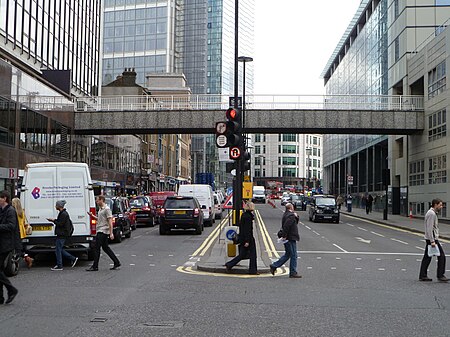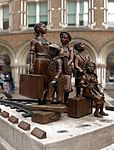Wormwood Street
Streets in the City of LondonUse British English from December 2016

Wormwood Street is a short street in the City of London which runs between London Wall at its western end and a junction with Bishopsgate and Camomile Street in the east. It is a dual carriageway which forms part of the A1211 route between Barbican and Whitechapel. The nearest London Underground stations to Wormwood Street are Liverpool Street and Moorgate. It is within the London congestion charge zone. The postcode for the street is EC2.
Excerpt from the Wikipedia article Wormwood Street (License: CC BY-SA 3.0, Authors, Images).Wormwood Street
Wormwood Street, City of London
Geographical coordinates (GPS) Address Nearby Places Show on map
Geographical coordinates (GPS)
| Latitude | Longitude |
|---|---|
| N 51.516388888889 ° | E -0.083055555555556 ° |
Address
Barclays
Wormwood Street
EC2M 1RQ City of London
England, United Kingdom
Open on Google Maps






